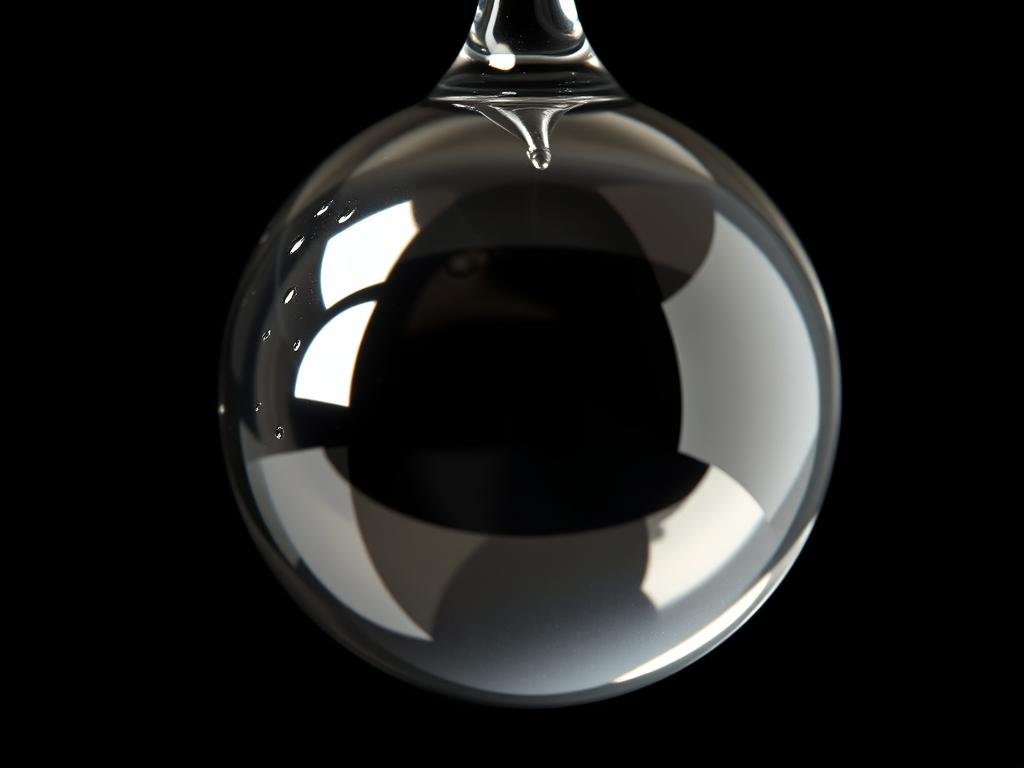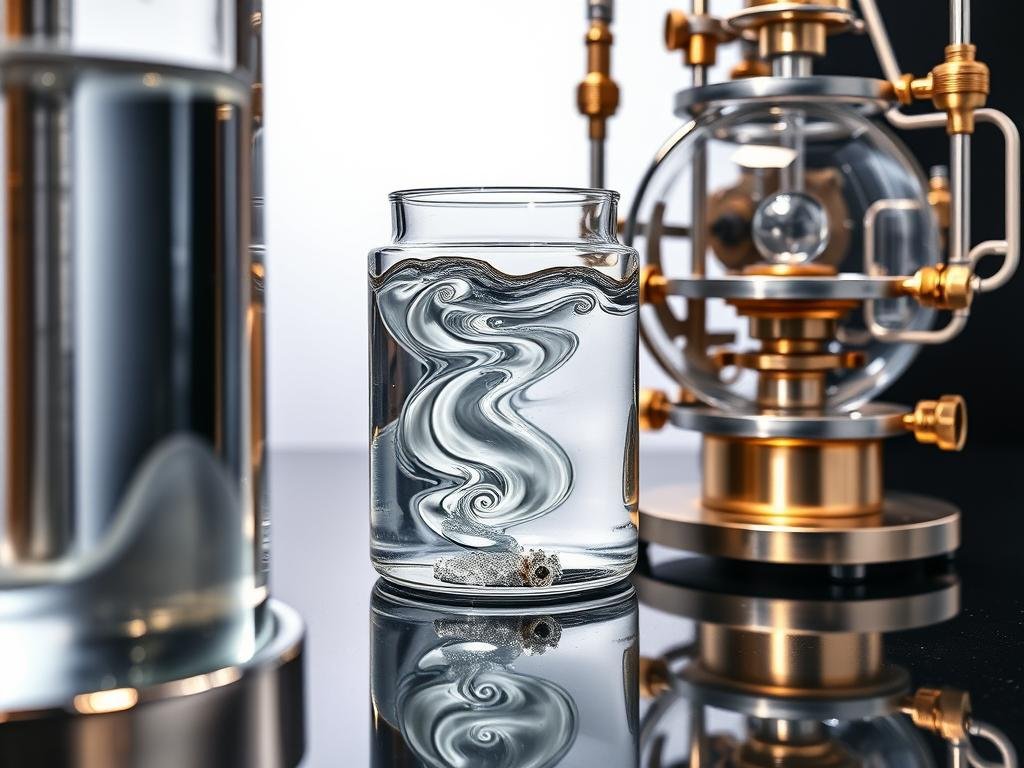Quecksilber, ein einzigartiges Element im Periodensystem, ist bemerkenswert dafür, bei Raumtemperatur im flüssigen Zustand zu sein. Diese Eigenschaft, kombiniert mit seiner hohen Dichte, macht es zu einem interessanten Thema in verschiedenen wissenschaftlichen Disziplinen.
Das Konzept der Dichte, definiert als Masse pro Volumeneinheit, ist entscheidend für das Verständnis der physikalischen Eigenschaften von Elementen. Die Dichte von Quecksilber ist besonders bemerkenswert und beeinflusst seine Anwendungen im Laufe der Geschichte, von industriellen Prozessen bis hin zu wissenschaftlichen Instrumenten.
Das Verständnis der Dichte von Quecksilber ist in verschiedenen Kontexten wesentlich, einschließlich Bildung und Industrie. Dieser Artikel wird die Dichte von Quecksilber im Detail untersuchen, sie mit anderen Substanzen vergleichen und ihre Implikationen betrachten.
Was macht Quecksilber unter Metallen einzigartig
Unter allen Metallen hat Quecksilber eine charakteristische Eigenschaft, die es von anderen unterscheidet. Seine Einzigartigkeit liegt in seinen physikalischen Eigenschaften und seiner historischen Bedeutung.
Das einzige flüssige Metall bei Raumtemperatur
Quecksilber ist das einzige elementare Metall, das bei Raumtemperaturim flüssigen Zustand bleibt. Diese Eigenschaft ist auf seine Elektronenkonfiguration und atomare Bindung zurückzuführen, die zu einem niedrigen Schmelzpunkt von -38,83°C führen. Andere Metalle wie Cäsium, Gallium und Rubidium haben Schmelzpunkte knapp über Raumtemperatur, aber Quecksilber ist das einzige, das unter Standardbedingungen flüssig ist.
Historische Bedeutung und Entdeckung
Quecksilber ist seit der Antike bekannt, mit Nachweisen seiner Verwendung, die bis etwa 1500 v. Chr. in Ägypten zurückreichen. Der Name „Quecksilber“ stammt aus der Alchemie des 6. Jahrhunderts, wo das Metall mit dem Planeten assoziiert wurde. Das chemische Symbol Hg leitet sich vom lateinischen „hydrargyrum“ ab, was „flüssiges Silber“ bedeutet. Die einzigartigen Eigenschaften von Quecksilber machten es im Laufe der Geschichte wertvoll für verschiedene Anwendungen, von Kosmetika bis hin zu wissenschaftlichen Instrumenten.
Die charakteristischen Eigenschaften von Quecksilber, einschließlich seines Dichte und flüssigen Zustands, haben es zu einem bedeutenden Element in der Geschichte gemacht. Seine Position im Periodensystem und seine Elektronenkonfiguration tragen zu seinen einzigartigen Merkmalen bei, die im Zusammenhang mit seiner Dichte weiter untersucht werden.
Das Verständnis der Dichte von Quecksilber
Das Konzept der Dichte ist wesentlich, um die Eigenschaften von Quecksilber zu verstehen, einem flüssigen Metall mit einzigartigen Merkmalen. Dichte wird als Verhältnis von Masse zu Volumen definiert, eine grundlegende Eigenschaft in Physik und Chemie.
Definition und Messung
Die Dichte wird gemessen, indem die Masse einer Substanz durch ihr Volumen dividiert wird. In wissenschaftlichen Kontexten wird die Dichte typischerweise in Einheiten wie Gramm pro Kubikzentimeter (g/cm³) angegeben. Die Messung der Dichte ist entscheidend, um das Verhalten von Substanzen unter verschiedenen Bedingungen zu verstehen.
Dichtewert von Quecksilber: 13,546 g/cm³
Quecksilber hat bei 20°C eine Dichte von 13,546 g/cm³. Dieser Wert zeigt, dass Quecksilber eine sehr dichte Flüssigkeit ist, was eine seiner charakteristischen Eigenschaften ist. Um dies ins Verhältnis zu setzen, hier ein Vergleich der Dichte von Quecksilber mit anderen Substanzen:
| Substanz | Dichte (g/cm³) |
|---|---|
| Quecksilber | 13.546 |
| Wasser | 1.000 |
| Lead | 11.34 |
Wie Temperatur die Dichte von Quecksilber beeinflusst
Die Temperatur beeinflusst die Dichte von Quecksilber erheblich. Mit steigender Temperatur dehnt sich Quecksilber aus und seine Dichte nimmt ab. Der Volumenexpansionskoeffizient von Quecksilber beträgt 181,71 × 10−6 bei 20°C. Diese Eigenschaft macht Quecksilber in Thermometern und anderen wissenschaftlichen Instrumenten nützlich.

Das Verständnis der Dichte von Quecksilber und ihrer Beziehung zur Temperatur ist für verschiedene Anwendungen, einschließlich wissenschaftlicher Forschung und industrieller Prozesse, entscheidend.
Vergleich der Quecksilberdichte mit anderen Substanzen
Bei der Untersuchung der Dichte von Quecksilber wird deutlich, wie es sich unter anderen Metallen und Flüssigkeiten hervorhebt. Die Dichte von Quecksilber beträgt 13,546 g/cm³, was es zu einer der dichtesten bekannten Substanzen macht.
Vergleich mit anderen Metallen
Quecksilber ist dichter als einige Metalle wie Eisen (7,87 g/cm³) und Blei (11,3 g/cm³), aber weniger dicht als Gold (19,3 g/cm³). Dieser Vergleich hebt die einzigartige Position von Quecksilber unter den Metallen hervor. Zum Beispiel schwimmt eine alte Pfundmünze mit einer Dichte von ~7,6 g/cm³ auf Quecksilber aufgrund ihrer Auftriebskraft und der starken Oberflächenspannung von Quecksilber.
Vergleich mit Wasser und gängigen Flüssigkeiten
Quecksilber ist etwa 13-mal dichter als Wasser (1 g/cm³). Dieser erhebliche Unterschied in der Dichte erklärt, warum Gegenstände, die dicht, aber immer noch viel weniger dicht als Quecksilber sind, auf seiner Oberfläche schwimmen können. Die hohe Dichte von Quecksilber macht es zu einem interessanten Thema für die Untersuchung von Auftrieb und Fluiddynamik.
Das berühmte „Mann, der auf Quecksilber sitzt“-Phänomen
Im Jahr 1972 veröffentlichte National Geographic ein Foto eines Mannes, der auf einem Quecksilbertank sitzt, was die hohe Dichte zeigt. Die Fähigkeit des Mannes, auf Quecksilber zu sitzen, ohne einzusinken, ist ein Beweis für seine außergewöhnliche Dichte und Oberflächenspannung. Wie Experten feststellen, „erlaubt die starke Oberflächenspannung von Quecksilber, dass Objekte so erscheinen, als würden sie aufgrund des Auftriebs höher schweben als erwartet.“
Anwendungen, die die hohe Dichte von Quecksilber nutzen
Die hohe Dichte von Quecksilber hat es zu einem wesentlichen Material bei der Entwicklung präziser Messinstrumente gemacht. Seine einzigartigen Eigenschaften haben es für verschiedene wissenschaftliche und industrielle Anwendungen ideal gemacht.
Barometer und Druckmessung
Die hohe Dichte und der niedrige Dampfdruck von Quecksilber machten es besonders wertvoll für den Einsatz in Barometern und Manometern zur Messung atmosphärischen und Flüssigkeitsdrucks. Die Dichte von Quecksilber ermöglicht genaue Druckmessungen aufgrund seines hohen Gewichts-zu-Volumen-Verhältnisses. Aufgrund der Toxizität von Quecksilber wird sein Einsatz in diesen Instrumenten jedoch schrittweise eingestellt.

Thermometer und Temperaturmessung
Quecksilberthermometer werden aufgrund der vorhersehbaren thermischen Ausdehnungseigenschaften von Quecksilber häufig für präzise Temperaturmessungen verwendet. Die hohe Dichte von Quecksilber trägt auch zur Genauigkeit dieser Thermometer bei. Obwohl Quecksilberthermometer aufgrund von Sicherheitsbedenken ersetzt werden, waren sie einst ein Standard in vielen wissenschaftlichen und industriellen Einrichtungen.
Weitere wissenschaftliche und industrielle Anwendungen
Die Dichte von Quecksilber, kombiniert mit seiner guten elektrischen Leitfähigkeit, macht es nützlich in versiegelten elektrischen Schaltern und Relais. Außerdem wird Quecksilber in spezialisierten Lampen verwendet, wie Ultraviolett- und Leuchtstofflampen, bei denen ein elektrischer Entladung durch Quecksilberdampf ein bläuliches Leuchten erzeugt, das reich an ultraviolettem Licht ist. Ein Teil des Quecksilbers wird auch in der Herstellung von Arzneimitteln und landwirtschaftlichen Fungiziden verwendet.
Sicherheitsüberlegungen und Umweltbelastung
Das Verständnis der Sicherheitsüberlegungen und der Umweltbelastung durch Quecksilber ist aufgrund seiner weit verbreiteten Verwendung und Toxizität von entscheidender Bedeutung. Quecksilber ist ein giftiges Element, das sowohl für die menschliche Gesundheit als auch für die Umwelt erhebliche Risiken darstellt.
Toxizität und Gesundheitsgefahren
Die Toxizität von Quecksilber kann zu Vergiftungen durch Einatmen seines Dampfes, Einnahme löslicher Verbindungen oder Absorption durch die Haut führen. Die Exposition gegenüber Quecksilber kann schwere gesundheitliche Folgen haben, einschließlich Schäden am Nervensystem, an den Nieren und anderen Organen.
Moderne Ersatzstoffe für quecksilberbasierte Instrumente
Aufgrund der Toxizität von Quecksilber wurden viele quecksilberbasierte Instrumente durch sicherere Alternativen ersetzt. Digitale Thermometer und elektronische Drucksensoren sind Beispiele für moderne Ersatzstoffe, die die Verwendung von Quecksilber in verschiedenen Anwendungen reduziert haben. Zusätzlich wurden sicherere industrielle Prozesse entwickelt, um die Quecksilberexposition zu minimieren.
| Quecksilberbasiertes Instrument | Moderne Ersatzlösung |
|---|---|
| Quecksilberthermometer | Digitale Thermometer |
| Quecksilberbarometer | Elektronische Drucksensoren |
Sicherer Umgang und Entsorgung
Der richtige Umgang und die Entsorgung von Quecksilber und quecksilberhaltigen Geräten sind entscheidend, um Umweltverschmutzung zu verhindern. Spezialisierte Entsorgungsmethoden sind erforderlich, um sicherzustellen, dass Quecksilber sicher gehandhabt wird und nicht in Ökosysteme gelangt, wo es sich in Nahrungsketten bioakkumulieren kann.
Fazit
Wenn wir unsere Erforschung von Quecksilber abschließen, fällt seine Dichte als ein wichtiger Aspekt seiner faszinierenden Eigenschaften auf. Die Position von Quecksilber im Periodensystem, neben Elementen wie Gold und Silber, ist durch seine einzigartigen physikalischen und chemischen Eigenschaften gekennzeichnet.
Die Dichte von Quecksilber, 13,546 g/cm³, ist ein entscheidender Faktor für seine Anwendungen, von Barometern bis zu Thermometern. Historisch spielte die Dichte von Quecksilber eine bedeutende Rolle bei wissenschaftlichen Fortschritten, aber seine Toxizität hat zu einem notwendigen Übergang von seiner Verwendung geführt.
Das Verständnis der Dichte von Quecksilber hat zum breiteren wissenschaftlichen Wissen über die Zusammenhänge zwischen den Eigenschaften von Elementen beigetragen. Die moderne Wissenschaft hat sicherere Alternativen zu Quecksilber gefunden, während sie dennoch von den Prinzipien profitiert, die durch das Studium seiner Eigenschaften entdeckt wurden. Indem wir die faszinierenden Eigenschaften von Quecksilber schätzen und seine Gefahren respektieren, können wir verantwortungsvolle Ansätze für seine verbleibenden Anwendungen fördern.
